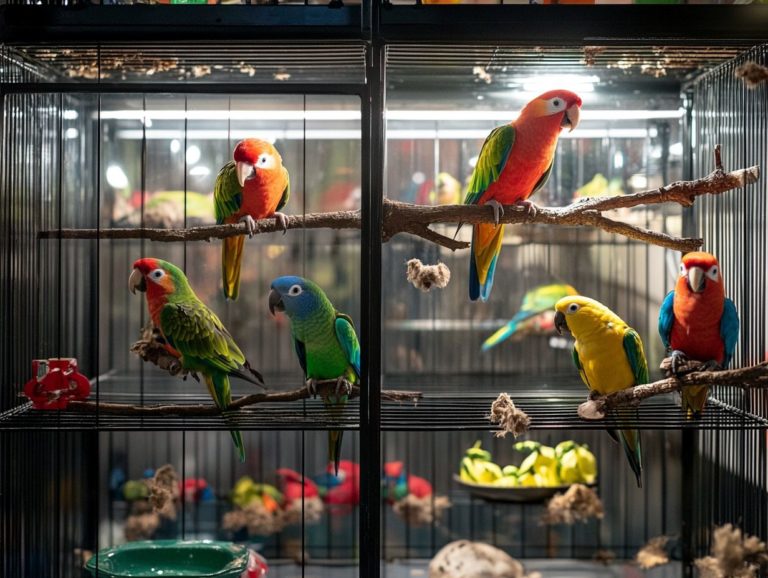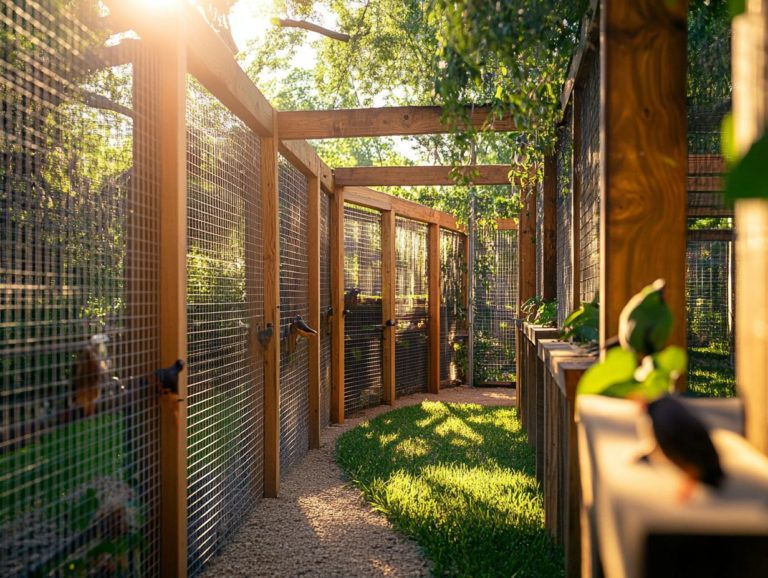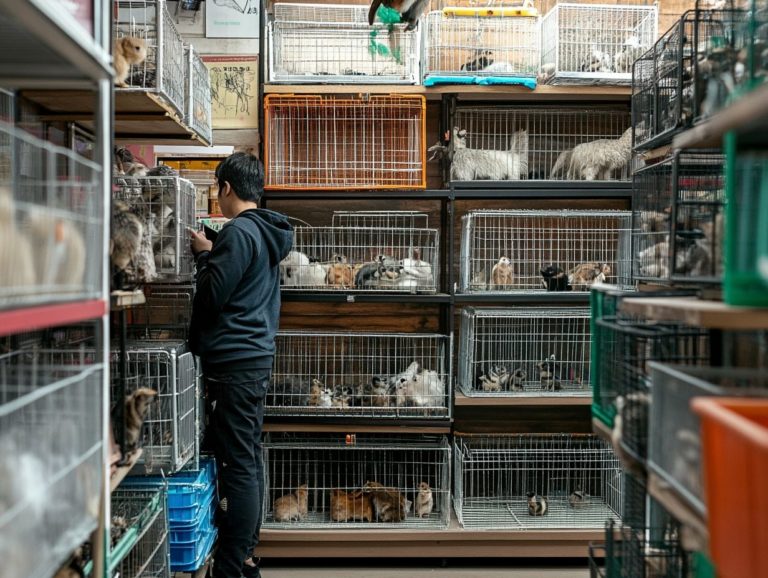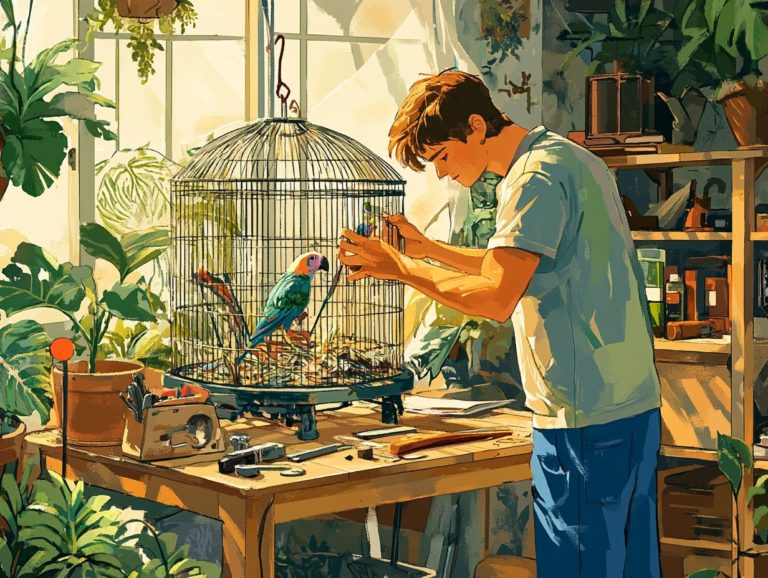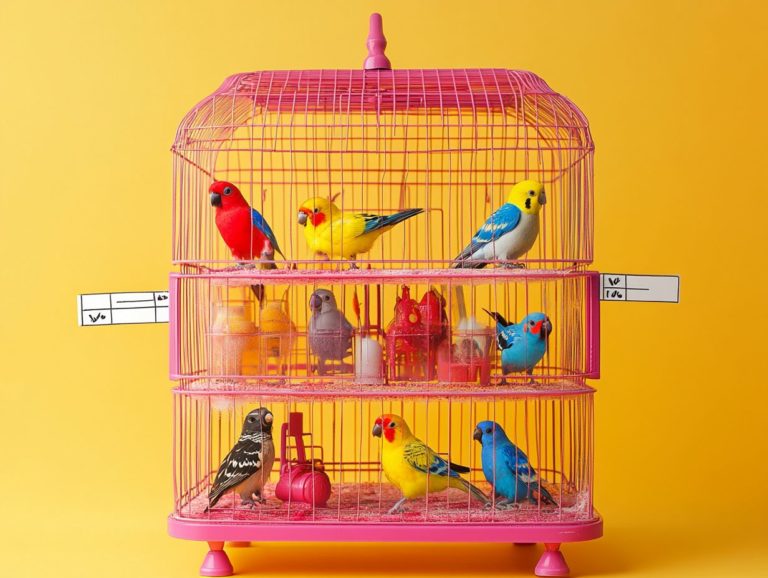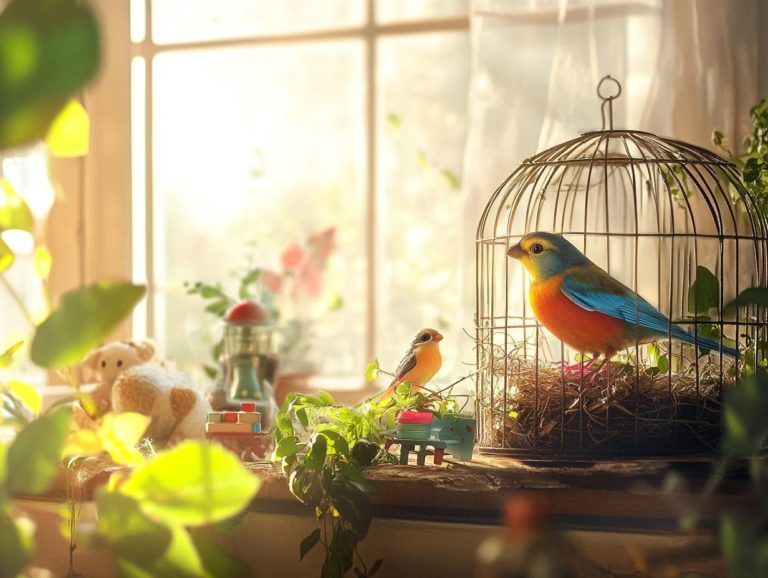Choosing the Right Cage for Your Pet Bird
Choosing the right cage for your pet bird is essential for their happiness and health. A well-suited cage not only provides a safe haven but also influences their behavior, activity level, and overall well-being.
This guide delves into critical factors such as size, shape, and material. It ensures you discover the perfect home for your feathered companion. You’ll explore various cage types tailored for different bird species and uncover features that enrich your bird’s living experience.
Prepare to cultivate a vibrant environment that your pet will absolutely adore!
Contents
Key Takeaways:
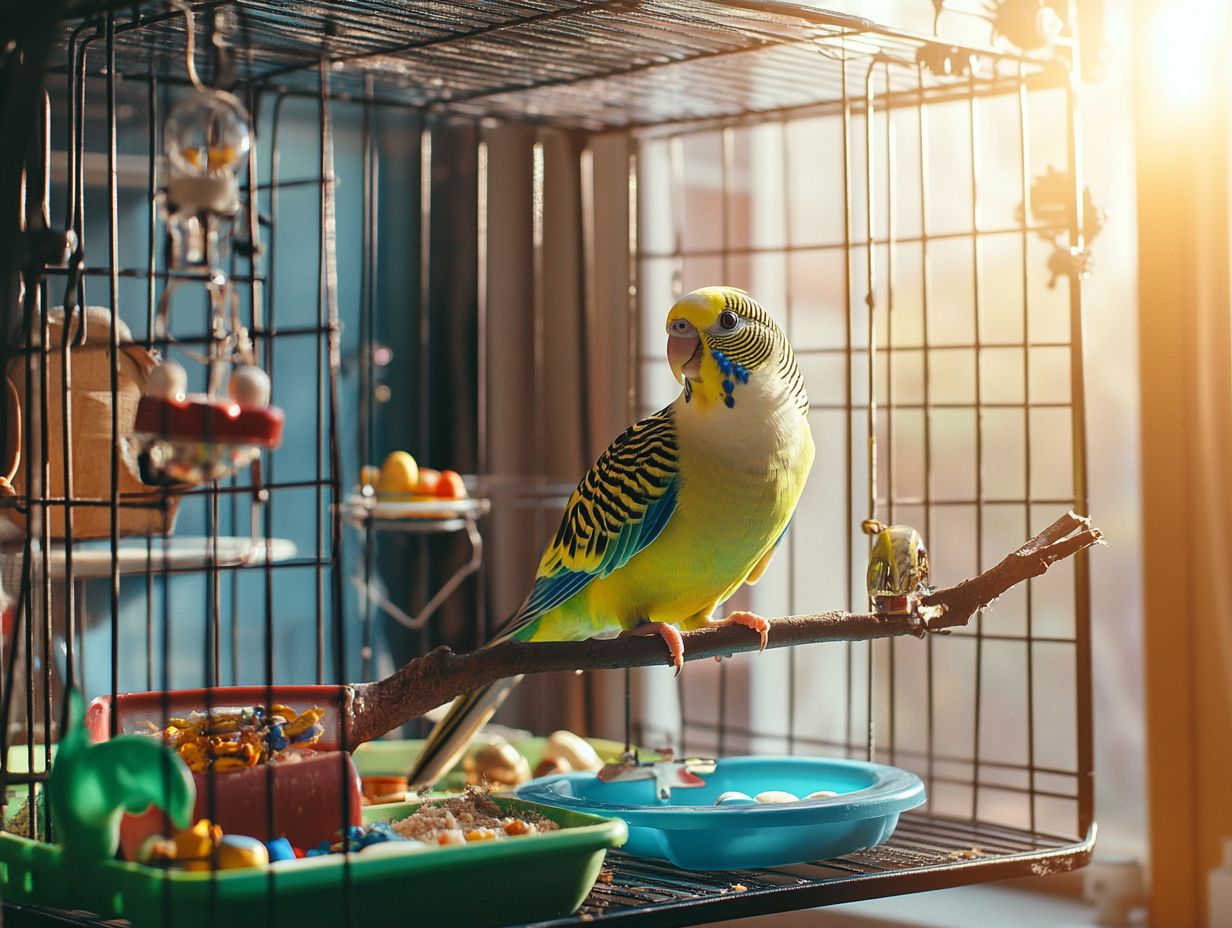
- Choosing the right cage is crucial for your pet bird’s well-being and overall health.
- When choosing a cage, consider factors such as size, shape, material, and durability.
- Different bird species have specific needs, so be sure to research and choose the best cage for your bird’s size and species.
The Importance of Choosing the Right Cage
Selecting the perfect cage is essential for safeguarding the safety, health, and happiness of your cherished pet birds. Additionally, choosing the right swing for your bird can enhance their well-being, whether they be parrots, cockatoos, or macaws.
A well-designed cage creates a cozy living space and incorporates specific features tailored to the unique needs of various bird species. To ensure you select the right species for your home, consider how to choose the right bird species for you. The right size and materials can profoundly influence their well-being, ensuring they have room to move, play, and interact socially.
Choosing the right cage is key to being a great pet owner!
Why the Cage Matters for Your Pet Bird’s Well-being
The cage is an important part of a bird s environment and significantly impacts its well-being and happiness.
A well-designed cage doesn t just provide a safe retreat; it acts as a stage for ways to connect with others that are essential for mental stimulation. Birds are inherently social beings, and having the freedom to engage with their companions alleviates stress and encourages healthy behaviors.
When the cage is appropriately sized, it allows for ample movement. This promotes exercise, which is crucial for maintaining overall health.
By enabling free play within this environment, you foster activities vital for mental wellness and nurture a positive demeanor.
This harmonious blend of social and physical opportunities not only enhances a bird’s quality of life but also contributes to its longevity.
Factors to Consider When Choosing a Cage
Selecting the ideal cage for your pet bird demands thoughtful consideration of several factors that can profoundly influence their quality of life. For guidance, check out how to choose the right cage for your species. Pay attention to aspects such as size, shape, material, and ease of cleaning to ensure a comfortable and healthy environment for your feathered friend.
Size and Shape
The size of a bird cage is critical and can significantly impact your bird’s comfort and behavior.
A spacious cage allows your bird to move freely and engage in playful activities, which are essential for its physical and mental well-being. For instance, parakeets flourish in cages that are at least 24 inches long and 18 inches wide.
Larger species, like cockatoos, require even more room often needing a cage that’s a minimum of 36 inches long and 24 inches wide to accommodate their lively antics.
The shape of the cage also matters. Whether rectangular or rounded, it can influence your bird’s perception of space. A well-designed environment fosters a sense of security and encourages exploration, enhancing their overall sense of freedom and happiness.
Start your search for the perfect cage today! Your bird will thank you!
Material and Durability
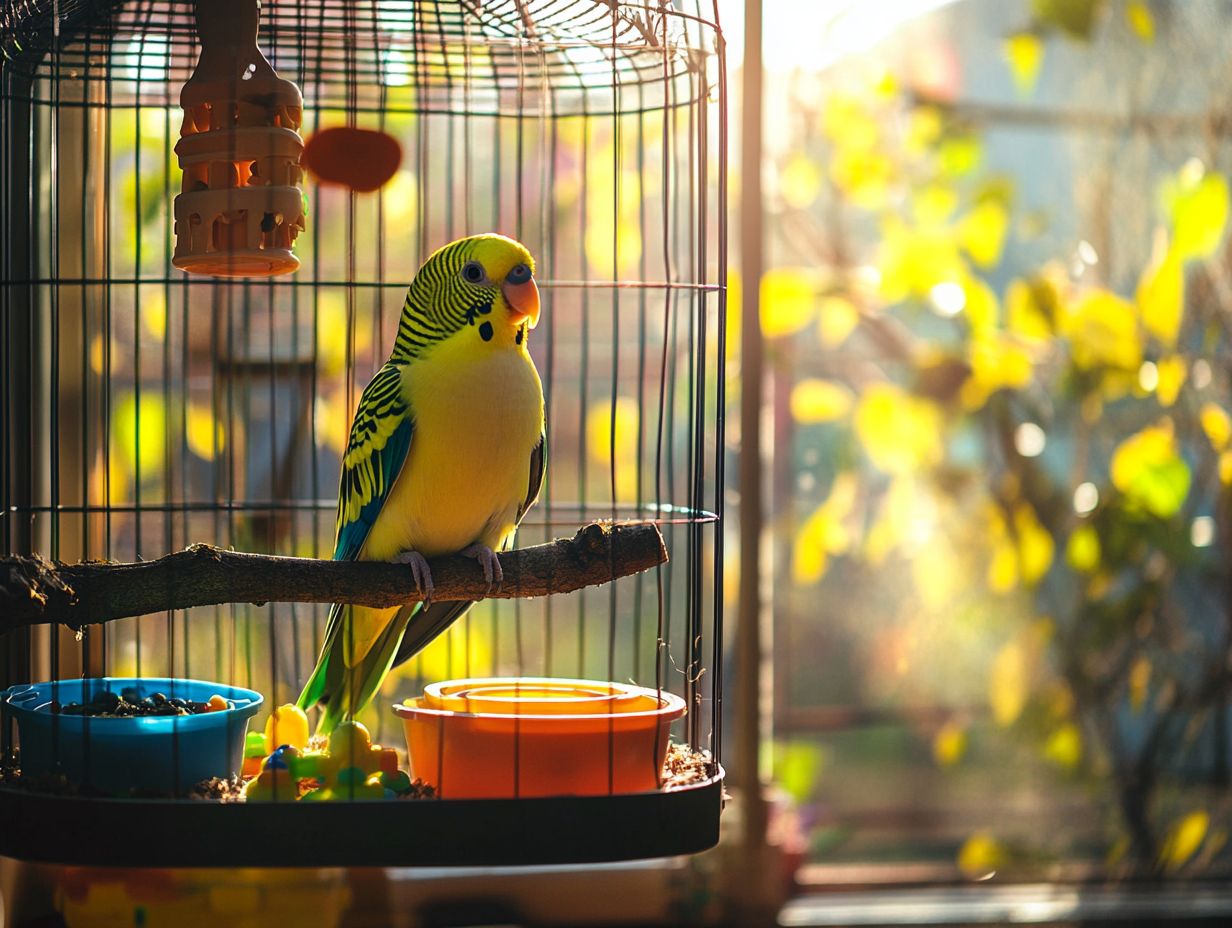
The choice of material for a bird cage is essential, as it impacts the durability, safety, and health of your pet. If you’re considering getting a pet bird, check out how to choose the right bird for your family.
Stainless steel stands out due to its strength and rust resistance. It s a long-lasting option that is easy to clean, vital for maintaining hygiene.
While stainless steel cages may be pricier, powder-coated cages offer vibrant colors and finishes. However, they might chip over time, posing safety risks for your birds.
Each material has its pros and cons. When considering your options, also think about how to choose the right location for a cage based on your circumstances and your avian companion’s needs.
Accessibility and Cleaning
Accessibility and ease of cleaning are crucial features for your birds cage. These aspects enhance your experience as an owner and create a comfortable habitat for your feathered friends.
When locks and latches are designed for easy access, feeding and routine health checks become simple. This minimizes stress for your avian companions.
A clean environment is vital for preventing diseases and ensuring your birds’ well-being. Quick access to the cage helps reduce waste and odors.
By prioritizing cleanliness, you cultivate a healthier living space. This frees up time to engage with your beloved pets.
Types of Cages for Different Bird Species
Choosing the right type of cage is crucial for different bird species. This is important whether you care for small finches or large parrots like Amazons and African Greys. To ensure you make the best choice, refer to this guide on how to choose the right pet bird for you.
Best Cages for Small Birds
Small birds like finches, canaries, budgies, and lovebirds need cages that prioritize safety, space, and comfort. These elements support their physical and emotional well-being.
A cage should offer ample space for movement, stretching, and flying. This gives them a broader view of their surroundings.
Pay attention to bar spacing to prevent escapes and protect their curious beaks and feet. Features like rounded corners, non-toxic materials, and secure locks create a safe haven.
When birds feel secure, they are more likely to exhibit natural behaviors and thrive. Choosing the right cage is essential, and understanding how to choose the perfect bird cage accessories can help meet their unique needs.
Best Cages for Medium Birds
Medium-sized birds, like conures and certain parrot species, need cages that provide ample space and engaging designs. These elements encourage interaction and play.
These vibrant creatures flourish in environments resembling their natural habitats. Select a cage that allows plenty of room for them to stretch their wings.
A spacious design promotes climbing, perching, and light flying, all vital for their health and stimulation. Add features like multiple levels and various perch sizes to enhance agility.
Incorporating integrated toys, swings, and ladders promotes exercise, socialization, and exploration. Ensure these charming birds remain happy and active.
Best Cages for Large Birds
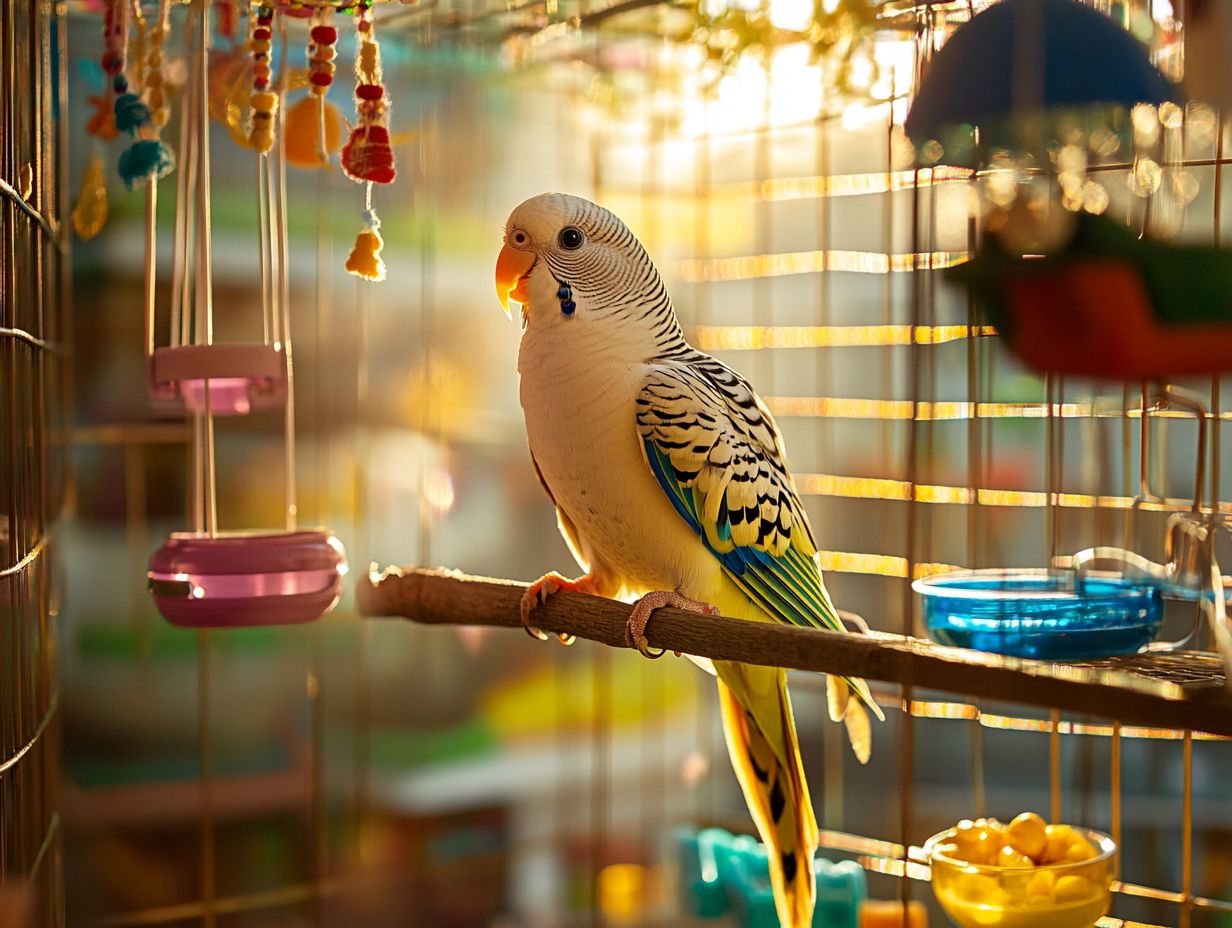
Large birds, like macaws, demand spacious and secure cages. These cages should come equipped with essential safety features, ample ventilation, and engaging toys.
These magnificent creatures flourish in environments that closely resemble their natural habitats. Choose cages that are generously sized and made from safe materials that won’t harm your bird.
Aim for a cage that measures at least 4 feet wide, 4 feet deep, and 6 feet tall to ensure there’s plenty of room for flapping and climbing. Proper ventilation is crucial for fresh air flow, helping to prevent respiratory issues.
By incorporating multiple perches at varying heights along with a selection of stimulating toys, you can significantly enhance their quality of life. This lets them play and explore, keeping them joyful and active!
Additional Features to Consider
When you choose a bird cage, consider adding features like:
- Perches
- Toys
- Food and water bowls
These enhancements significantly elevate your bird’s living experience, ensuring they have a comfortable and stimulating environment.
Perches and Toys
Perches and toys within a cage are essential elements for your birds. They provide both comfort and interaction.
These components not only enrich their environment but also encourage natural behaviors, allowing your feathered friends to engage in playful activities.
Different types of perches think natural wood, rope, and platform options mimic their natural habitats. This keeps their feet healthy as they explore.
Meanwhile, an assortment of toys, from foraging items to swings and chewable pieces, plays a pivotal role in mental stimulation and social interaction.
By incorporating various textures, colors, and movements into the cage, you can create a dynamic space that fosters curiosity and overall well-being.
Food and Water Bowls
Properly designed food and water bowls are essential for maintaining the health and happiness of your birds. These vital tools guarantee that your feathered companions receive the nutrition and hydration they need.
As a bird owner, you have a wide array of options to choose from, including:
- Stainless steel
- Ceramic
- Plastic bowls
Each material brings its own advantages in terms of ease of cleaning and durability. Choosing bowls with a non-slip base can improve stability, reducing spills and making it easier for your birds to access their meals.
Regular maintenance cleaning and refilling the bowls ensures they stay hygienic, ultimately promoting the overall health and well-being of your avian friends.
Location and Placement
The location and placement of your bird cage play a vital role in shaping your pet’s environment. This directly influences their health and behavior.
When determining the perfect spot for the cage, consider factors like sunlight exposure and air currents. A well-lit area can elevate their mood, given that birds flourish in natural light.
However, be cautious of direct sunlight for extended periods, as it can lead to overheating. It’s equally important to avoid drafts; sudden temperature changes can stress your feathered companion.
Positioning the cage close to social interactions enriches their life. This allows them to feel engaged and included in family activities, ultimately nurturing a happier and healthier pet.
Frequently Asked Questions
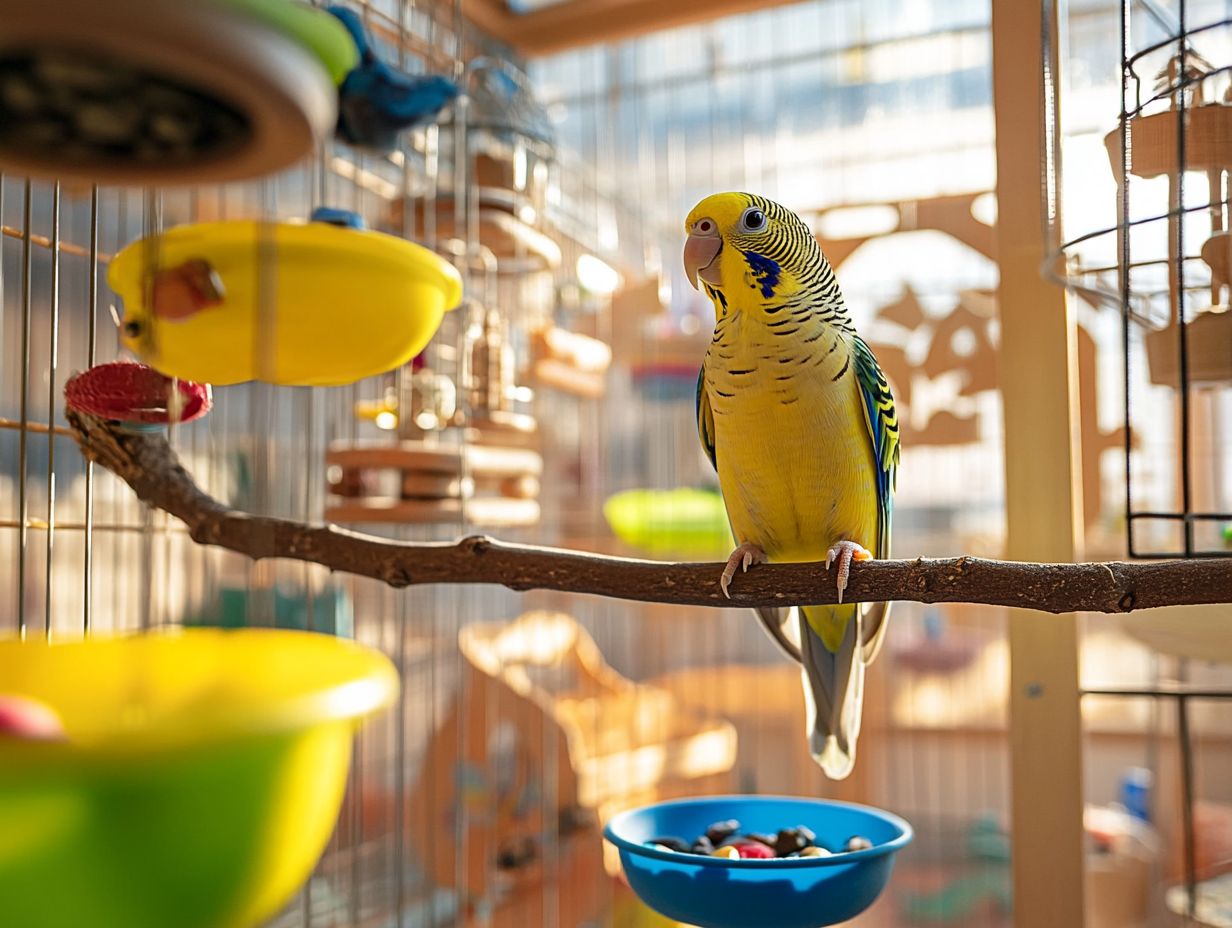
What size cage is appropriate for my pet bird?
The size of the cage will depend on the size and type of bird you have. As a general rule, the cage should be large enough for your bird to fully stretch its wings and move around comfortably.
This is particularly important for larger birds like macaws and cockatoos.
What material should the cage be made of?
For smaller birds, choose a metal cage with a non-toxic coating. For larger birds, go for a long-lasting stainless steel or powder-coated cage. Additionally, consider adding essential cage accessories for pet birds to enhance their living environment. These materials resist chewing and wear.
Should I choose a cage with a playtop?
A playtop cage adds extra space for your bird to explore and play. However, it s not necessary for all birds; consider your bird s size and activity level.
How many perches should the cage have?
Your bird needs enough perches to sit and move comfortably. Aim for at least 2-3 perches of different sizes to promote foot health and exercise, especially for active birds like African Greys and Amazon Parrots.
What type of food and water bowls should I use in the cage?
Opt for food and water bowls made of non-toxic materials that attach securely to the cage. Always use separate bowls for food and water to maintain hygiene and reduce the risk of contamination.
Can I use a secondhand cage for my bird?
Avoid using a secondhand cage. It may have wear and tear, rust, or harmful coatings like Teflon, which can be dangerous for your bird. Invest in a new cage for their safety and well-being.
Summary
When choosing a cage for your bird, remember these key points:
- Use non-toxic materials for the cage.
- Consider a playtop based on your bird’s needs.
- Provide 2-3 perches of different sizes.
- Choose secure, separate food and water bowls.
- Avoid secondhand cages; invest in a new one for safety.

